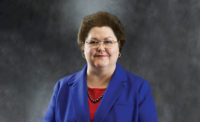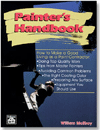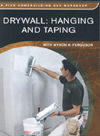W&C sat down to chat with Bill Courtney, ClarkDietrich's CEO, to talk about his plan for retiring.
Walls & Ceilings: Tell us about where you’re from and your history pre-career.
Bill Courtney: I was born in Fort Worth, Texas. My parents were missionaries and I spent my early years in Guatemala before moving back to Texas for high school. I received my BA at Austin College, and my MBA from SMU.
W&C: How did you get involved in the construction industry?
BC: It was completely unintended and a somewhat funny story to boot. While getting my MBA at SMU, I was working at the career recruitment center when I got a call from a person who needed someone to come interview at their company right away. It was quite urgent and I had to interview before the end of that day if I was interested. I wound up getting the job on the spot and felt quite proud of myself for nailing the interview. Months later, I found out that I had been the subject of a $5 bet between the owner, Jim Clark, and the president of his company, as to whether Jim could get an MBA student to interview at their firm by 5 p.m. the day that they called. It was a good lesson in humility, and, although it wasn’t a high stakes wager, it set my path for a career in steel framing.
W&C: What was the economy like when you started?
BC: It was 1984, we were coming out of a recession and the prime rate was 13 percent—ouch! At that point in the economy, folks were being discouraged to enter the manufacturing field, which says something about my sense of timing.
W&C: Tell us the history of your evolution to climbing the ranks?
BC: I was at Jim Clark’s Texas company for less than a year when he offered me the opportunity to run his Ohio steel stud company, Clark Steel Framing, in 1985. The company was small (20 employees) and I was promoted to president. I had a big title and little money, but I was my own boss. In 1987, I bought the company from Jim and, in 1991 I sold the company to AK Steel.
Over the years, through different owners, mergers and acquisitions, the company eventually evolved into ClarkDietrich Building Systems. It has been a truly incredible ride.
W&C: In your mind, was the goal to target residential or commercial builders?
BC: I have seen the whole cycle on the pursuit of both the commercial and residential markets. Steel framing has always been part of the commercial market. In the 1990s, our industry pursued the single-family housing market with limited success, primarily due to labor and cost barriers. More recently, we have been fighting to regain our market share from wood construction in midrise.
W&C: Do you think - from an engineering standpoint - that steel construction has an untapped market? Are builders missing an opportunity to be using steel versus wood in housing?
BC: Obviously, I am a true believer in steel framed construction. Steel has a lot going for it—the product is higher quality, recyclable, non-combustible, termite proof, etc. If you can figure out the cost side, you will end up with a superior structure.
W&C: Under your tenure and/or time in the industry, what are some of your greatest achievements?
BC: My biggest achievement is having been at the helm of an organization that grew from a single plant of 20 employees to 15 plants with over 1,400 employees through the years. I am also proud to have been the inaugural president of the Steel Framing Industry Association during the time that it grew from five members to more than 112 companies and 1,300 members.
W&C: Those are great accomplishments. Conversely, what are some of your regrets?
BC: I wish that I could have done more, a few years back, to prevent the industry infighting, which eventually led to the implosion of the Steel Stud Manufacturers Association, our metal framing association at the time. This also created a lot of confusion and turmoil for our distributors and contractors. It eventually helped the metal framing industry mature in terms of quality and reliability. It also helped launch the SFIA, which I believe is a strong association because it includes all the stakeholders in the metal framing industry. That being said, it was a long painful process to get where we are today.
W&C: Any notable years where you saw the business have record years? Anything in particular that triggered these booms?
BC: Yes, 1994, 2004, 2006, 2008, 2012 and 2016 were all big years primarily due to huge spikes in steel pricing, sometimes triggered by changes in trade policy, and strong underlying construction demand.
W&C: What major changes (if any) would you predict in 10 years from now?
BC: Due to tighter immigration policies and an overall decrease in millennials entering our industry, I think prefabrication and panelization will continue to be growing trends to offset long-term labor constraints in our industry.
Technology will drive us to use less paper, less energy, increase the spread of BIM and work smarter through artificial intelligence.
W&C: What is the biggest challenge you foresee in the wall and ceiling industry?
BC: Attracting smart young talent into our industry is the biggest challenge we face. We are going to have to be more creative and learn to rebrand ourselves in a way that appeals to the next generation. In other words, it will take a lot more than a $5 bet to fill key vacancies.
W&C: You’re leaving on a high note in regards to a healthy economy and being part of a powerhouse manufacturer. Any unfinished business you feel needs attending to?
BC: I am delighted to be able to leave on top and of my own volition. It was important to me to leave some runway, in terms of a strong economy, for my successor to have a few years to acclimate.
Taking the “Dive” into Retirement
W&C: Tell us about your successor.
BC: Our new president is Jim Collins, a 33-year veteran of the industry, who started his career at Dietrich Industries. Like me, he has worn many hats and seen the industry grow and prosper over the past three decades. Our company is built around a very strongly held set of values and Jim is the right person to lead the company.
W&C: What are your plans in retirement? Will you be traveling the seven seas?
BC: I am looking forward to pursuing other interests that I have neglected because of the time and travel commitments of my job. I can tell you that I will not miss the airport one bit.
I will continue to work part time for the Board of Directors in an advisory role. I have also made time to give back to the community. Maybe, my most important new role is being the team manager for my teenage daughter’s diving team.
I will miss the wonderful folks that are a part of the industry that allowed me to feed my family and have a very satisfying career. It was truly a dream job.









Report Abusive Comment